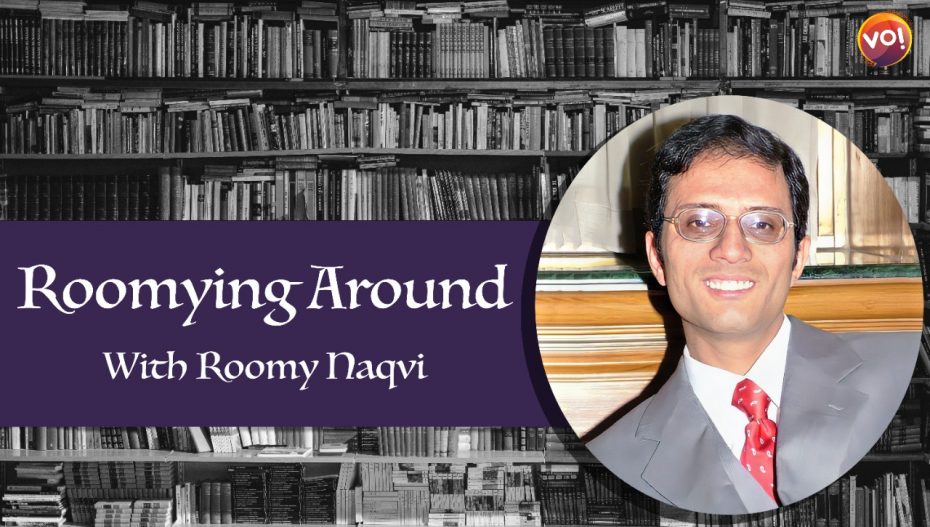This week, the news about the Air India sale to the Tatas was all over the town. Also, in our pandemic days, Adar Poonawalla’s Serum Institute of India has received good as well as bad press. There have also been some Marxist voices about the Air India sale being a “corporate sell-out”. In that context, there were also voices about the role of some Parsi traders during British times in the opium trade. However, when the Parsi traders worked in the China opium trade including Sir Jamsetjee Jeejeebhoy, they did not break any laws prevailing in the country at the time. There was nothing illegal or immoral associated with the business at that time in history. The issue, largely, with our ‘post-truth’ age, is that analyze everything from the current perspective in life. Of course, I would like to add a caveat that I do not condone or tolerate any activity that is illegal or even immoral in the laws of the land.
Thus, this week, while there is the prevailing idea of the triumph of good over evil, I thought I would emphasize a bit on the Parsis. The Parsis—my maternal ethnic gene—are an endogamous community. I felt I should state this too. The population of Parsi Zoroastrians today in the country is barely 60,000 persons. In fact, the excellent four-volume The Parsis of India: Continuing at the Crossroads edited by Shalini Bharat and Armaity Desai, (Sage Publications, New Delhi, 2017) quotes insightful figures from the Census of India. It says that from the 1890 Census (the earliest known Census) to the current Census, the population of the Parsis in the country never exceeded 114000.
Talking of Sir Jamsetjee Jeejeebhoy (1783-1859), some mention of his hugely philanthropic works may also be due, including the fact that since the mid-1820s, he personally paid the debts of every poor person in Mumbai’s civil jail. And lest we forget, it should also be said that he was born a poor boy who became an orphan at a young age.
Do take a look at the Sir J. J. College of Architecture website.

The Parsi entrepreneurial zeal is quite legendary as a large number of people would be acquainted with the Wadias, Tatas and the Godrejs among others. Qissa-e-Parsi, a documentary by Public Service Broadcasting Trust, is well worth watching.
“It’s a religion which in fact encourages capitalism. But capitalism with a very important social responsibility. That if you have made a lot of money, you must learn to share it” (6.26 to 6.34)
Noted Parsi Zoroastrian scholar, Khojeste Mistree quoted in Qissa-e-Parsi documentary
This may partly explain the Parsi entrepreneurial spirit. However, the popular imagination has it that the Parsis have ‘always been rich’. That is not true and is borne out by historical facts. The arrival of the Parsis in India is lost in historical antiquity with dates varying between the eight to the ten century A.D. Also, their arrival has been tied up with the famous ‘sugar in the milk’ story, which many Parsis believe to be true but a few Parsi scholars have recently started doubting its veracity. These include Justice Rohinton Nariman, who retired as a Supreme Court judge but who was trained to become a priest.
In fact, I had met the Parsi academic and India’s best-known football commentator, Novy Kapadia, a few times as also conducted an email interview with him.
“Have the Parsis felt a sense of discrimination as a minority?” –RN
“Parsis feel they have to respect the people in power who protect them. Hence, they got on well with the British too”. – Novy Kapadia
Email interview, November 2017
This may sound ‘strange’ to many people and may touch a contentious chord among others too. However, this is well-nigh possible because the Parsis in India adhere to the supposed promises that they made to Jadi Rana, the Hindu king who apparently gave them refuge, at least, as the ‘sugar in the milk’ story states. Some of those promises may sound like religious persecution from our current perspective but I have not come across any literature or Parsis who have decried that king who gave them refuge. In a sense, the Parsi work ethic is akin to the concept of the Protestant Work Ethic in history.
In fact, after their arrival in India, the Parsi Zoroastrians lived as artisans and worked on the lands they were given, while keeping their religious identity intact. For, at least, four to five centuries, there is not much by way of historical data about their activities in the country. One of the earliest Parsi priests who is noted for his scholarship is the twelfth-century priest, Neryosangh Dhaval.
“Mobed Neryosangh Dhaval’s Sanskrit translation of Zoroastrian religious texts formed one of the chief sources for later Indian Zoroastrians to produce Gujarati translations of their sacred books.”
— Encyclopedia Iranica, Section on “Gujarati”
In the sixteenth century, the name of Dasturji Meherji Rana of Navsari surfaces, from which point one could largely claim that the Parsis rose in social hierarchy. Meherji Rana was much appreciated by Emperor Akbar for his piety and scholarship. Also, Akbar was so pleased that he even incorporated the Zoroastrian symbol of the fravashi in his Deen-i-ilahi. Certainly, one should not forget here that the departure of the Parsis from Iran is attributed to the spread of Islam by Arab Muslims. So, maybe, I do see the truth in what Novy Kapadia told me in that email interview.
You might like to read about First Dastur Meherji Rana here.
In fact, the First Dasturji Meherji Rana Library was established in 1874 in Navsari and you can access the website here.
“The top Parsi industrialists had to make a huge leap. Perhaps, the Parsis did it most successfully were those like the Tatas who moved into industrialization of India. So, if you are participating in the development and industrialization of a new country, you become part of that elite group.” (11.47 to 12.05)
Feroza Mistree, cultural historian, in the Qissa-e-Parsi documentary
The Qissa-e-Parsi documentary is worth watching and you could catch it on the Youtube link above. You could also read an excellent review of it on Parsi Khabar here.
The idea of ethical existence is something Khojeste Mistree refers to in the documentary I just quoted. The idea of entrepreneurship and of being socially useful is also borne out by the work of Parsis as diverse as Shaheen Mistri, Kainaz Messman, or D. N. Wadia. I’m not even referring to another Parsi, Ronnie Screwvala. Darashaw Nosherwan Wadia was a pioneering geologist in the country.
Zoroastrians are guided by the essential idea of good words, good thoughts, good deeds constantly in their lives. Every act of a Zoroastrian, every day, is supposed to enforce the power of God, good, godliness in the world, and the power of Ahura Mazda. The symbol of the fravashi is the essence of God in us, human beings. Maybe, it is my personal bias but this might be the reason behind the ethical conduct of Parsis in public life and the goodwill that such a miniscule minority enjoys. If you would like to look at the image of the fravashi, the spirit of God is us, I have attached it here.
Some references for further reading:
1. “Opium Through History”, Central Bureau of Narcotics, Govt of India, http://cbn.nic.in/html/opiumhistory1.htm
2. Parsi Khabar https://parsikhabar.net/
3. A Zoroastrian tapestry : Art, Religion & Culture, edited by Pheroza J. Godrej & Firoza Punthakey Mistree. Mapin publishers
4. The Parsees in India: A Minority as Agent of Social Change by Eckehard Kulke, Weltforum Verlag, Munich, 1974.
5. Shaheen Mistri, Teach for All CEO at https://teachforall.org/shaheen-mistri.
6. Kainaz Messman, Theobrama Founder, https://theobroma.in/pages/founder .
7. D. N. Wadia, Vigyan Prasar, Govt of India, https://vigyanprasar.gov.in/darashaw-nosherwan-wadia/
8. Dinyal Patel’s book on Dadabhoy Naoroji is worth reading. Naoroji: Pioneer of Indian Nationalism. Harvard University Press, 2020. https://dinyarpatel.com/
9. Shernaz Cama’s UNESCO Parzor Foundation has done excellent work in the field of Zoroastrian studies for a long time. https://www.unescoparzor.com/













Excellent piece with well documented references, kudos to Roomy for telling many unknown facts about Parsees.
Very good,Roomy!
Intresting
The article provides ethical views related to the religious-social-economic aspects of the Parsi Zoroastrian Community in India. Looking forward to read a series of articles on it.
Very interesting article. Thanks Prof. Naqvi for your well researched article
Eighth Para – One of the earliest Parsi priests who is noted for his scholarship is the twelfth-century priest, Neryosangh Dhaval
Dasturji Naryosang Dhaval by the strength of his ritual and Manthric prayers brought down lighting, one of the 16 fires required for the Consecration of Iranshah Atash Behram in early Seventh Century.
According to the Iranshah Initiative Site the Fire of Iranshah in 2021 is 1300 Years Old, based on that and Qissa e Sanjan. Parsis came to India in early Seventh Century. And in 2021 – Shenshai Calendar states that it is the 1391 th Year
iranshahinitiative.com/history/
Good article full of personal insights which gives an insiders perspective on the community. Well researched with eclectic references befitting the standards set by Prof Naqvy.